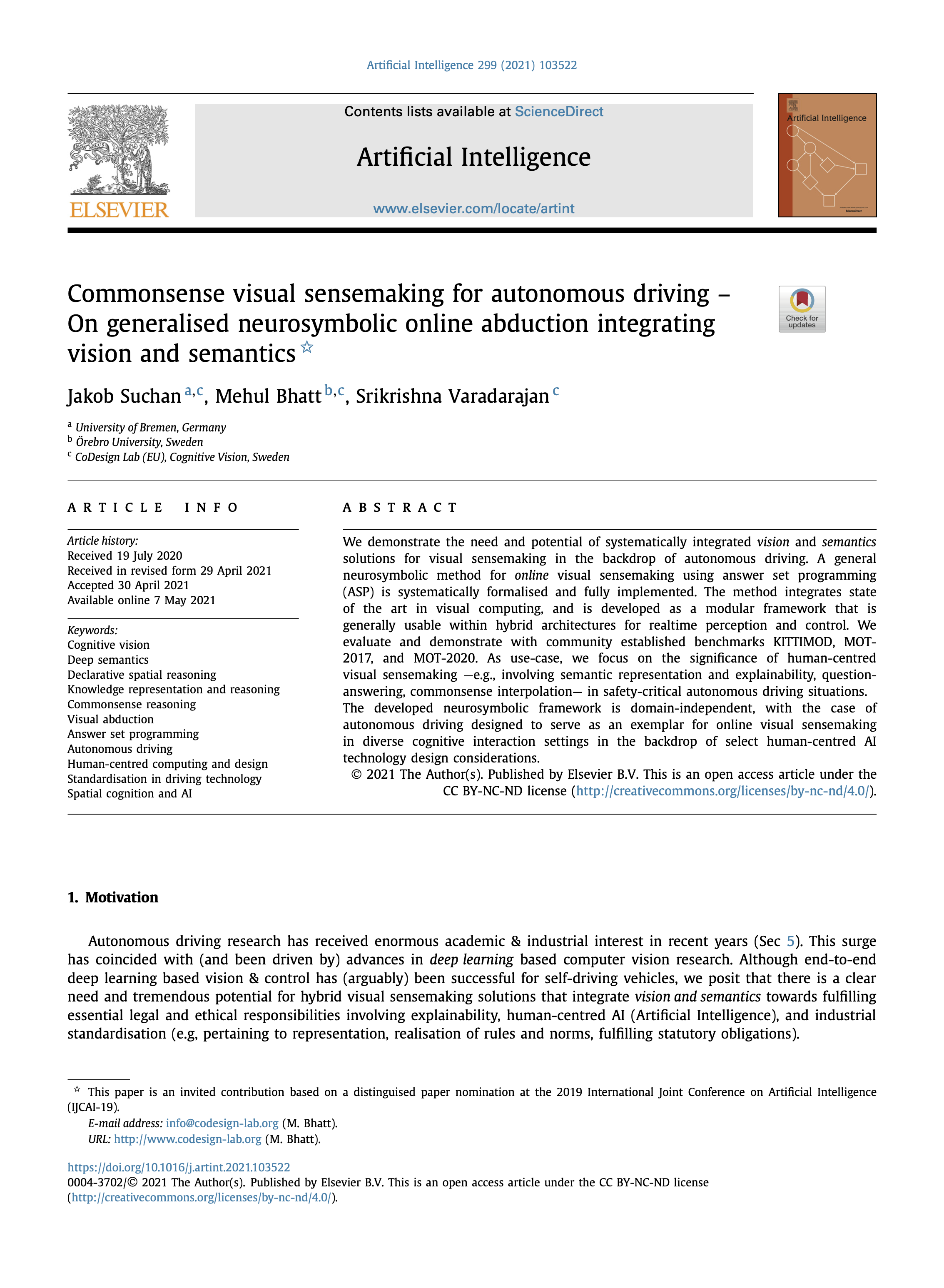
Scientific Highlights
| Artificial and Human Intelligence |
Research
Neurosymbolic Visual Commonsense. Autonomous Driving.
Online / Realtime Abduction. Explainability.
"We demonstrate the need and potential of systematically integrated visionand semanticssolutions for visual sensemaking...As use-case, we focus on the significance of human-centred visual sensemaking —e.g., involving semantic representation and explainability, question-answering, commonsense interpolation— in safety-critical autonomous driving situations.
We posit that there is a clear need and tremendous potential for hybrid visual sensemaking solutions that integrate vision and semanticstowards fulfilling essential legal and ethical responsibilities involving explainability, human-centred AI (Artificial Intelligence), and industrial standardisation (e.g, pertaining to representation, realisation of rules and norms, fulfilling statutory obligations)."

Neurosymbolic Visual Commonsense. Embodied Interaction.
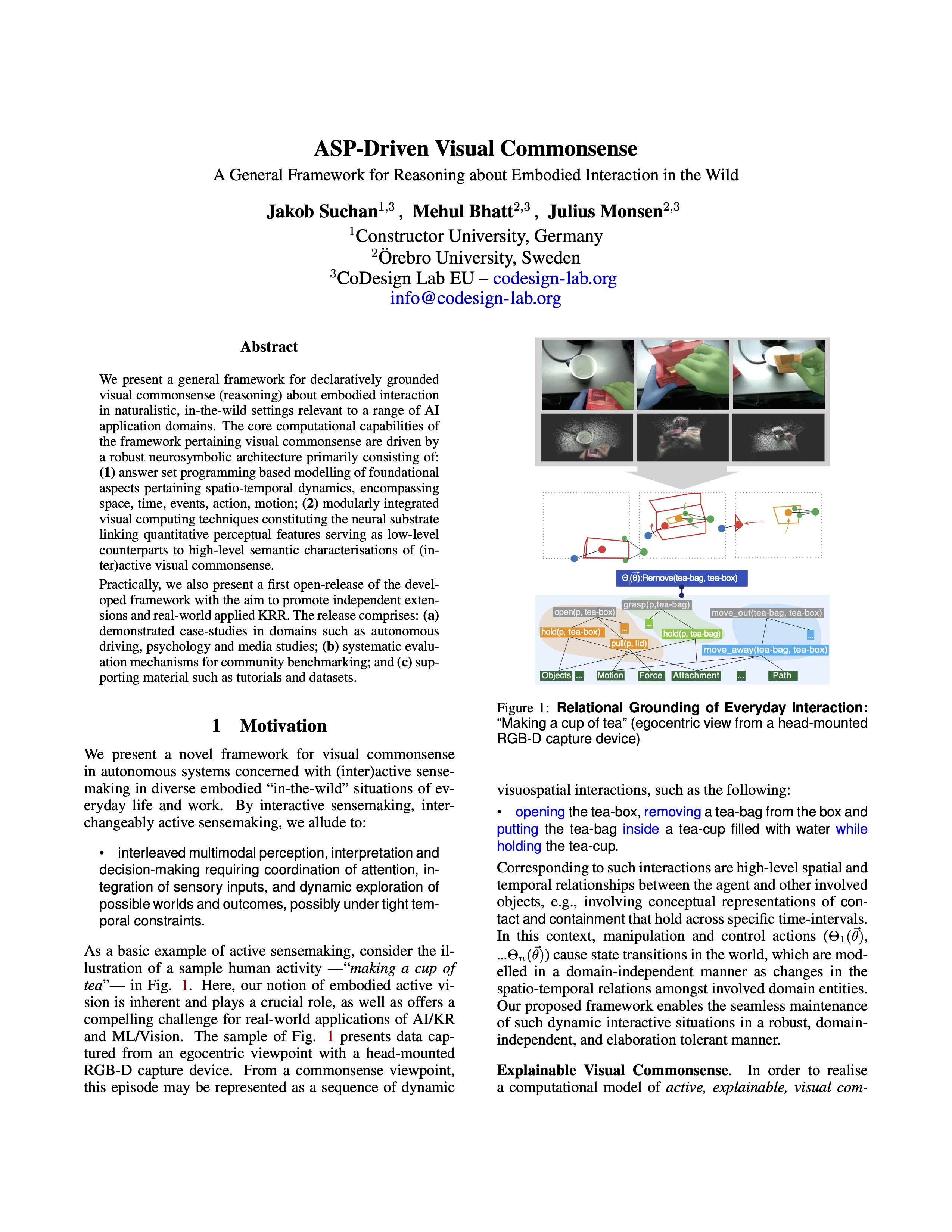
Interactive Sensemaking. Explainability.
"A novel framework for visual commonsense in autonomous systems concerned with (inter)active sensemaking in diverse embodied “in-the-wild” situations of everyday life and work. By (inter)active sensemaking, we allude to:
interleaved multimodal perception, interpretation and decision-making requiring coordination of attention, integration of sensory inputs, and dynamic exploration of possible worlds and outcomes, possibly under tight temporal constraints."
Visual Commonsense. Question-Answering.
Cognitive Psychology. Visual Perception.
"The key emphasis is on human-centred semantic interpretation and qualitative analysis of multi-modal perceptual data encompassing vision and eye-tracking. Whereas visual perception provides a compelling applied backdrop for the development and demonstration of vision and KR-centric general methods and tools for visuospatial computing, the broader orientation is geared toward tighter integration of KR with state-of-the-art in computer vision...at the interface of language, logic, and artificial intelligence."
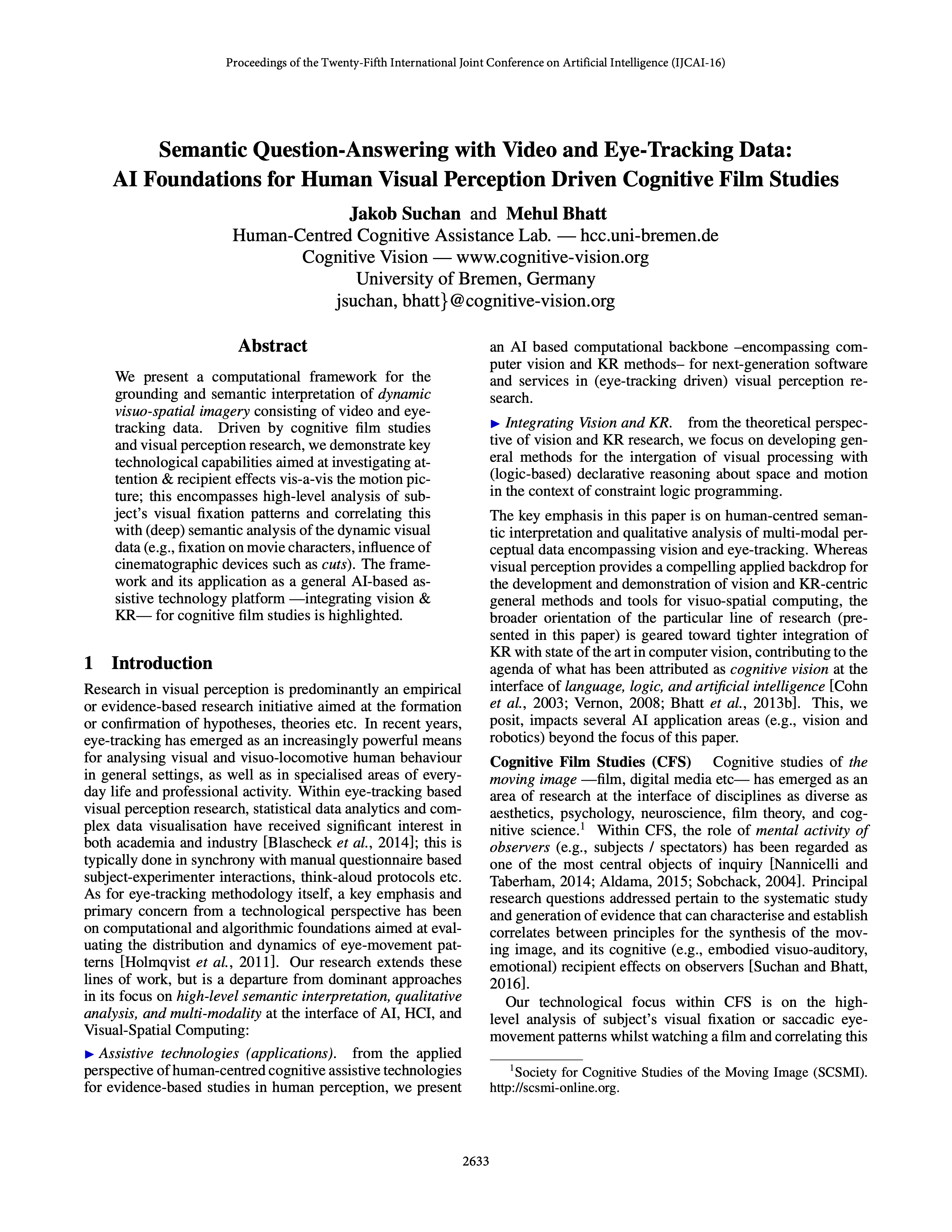
Artificial Intelligence. Spatial Cognition. Cognitive CAAD.
Human-Centred Building Architecture Design.
Cognitive Human-Factors.
"We propose that the foundational informatics of design systems, tools, and analytical aids concerned with creative spatial design and engineering tasks should be based on modalities of human spatial cognition at the scale of everyday human perception and thinking. We propose that design semantics, commonsense spatial cognition, and visuospatial abstraction and computing should be the driving forces underlying the foundations of next-generation design computing systems and paradigms."
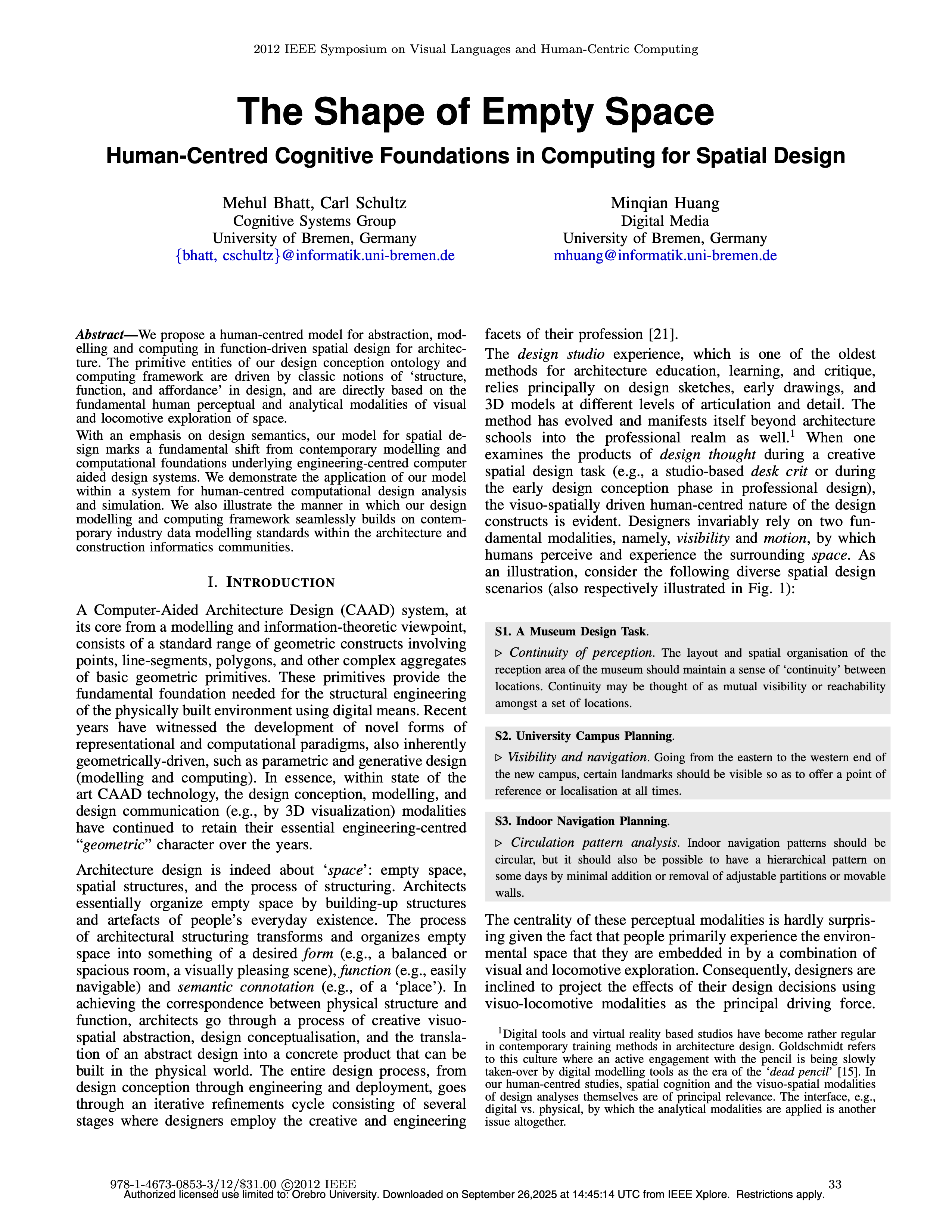
AI. Spatial Cognition. Embodied Architecture Design.
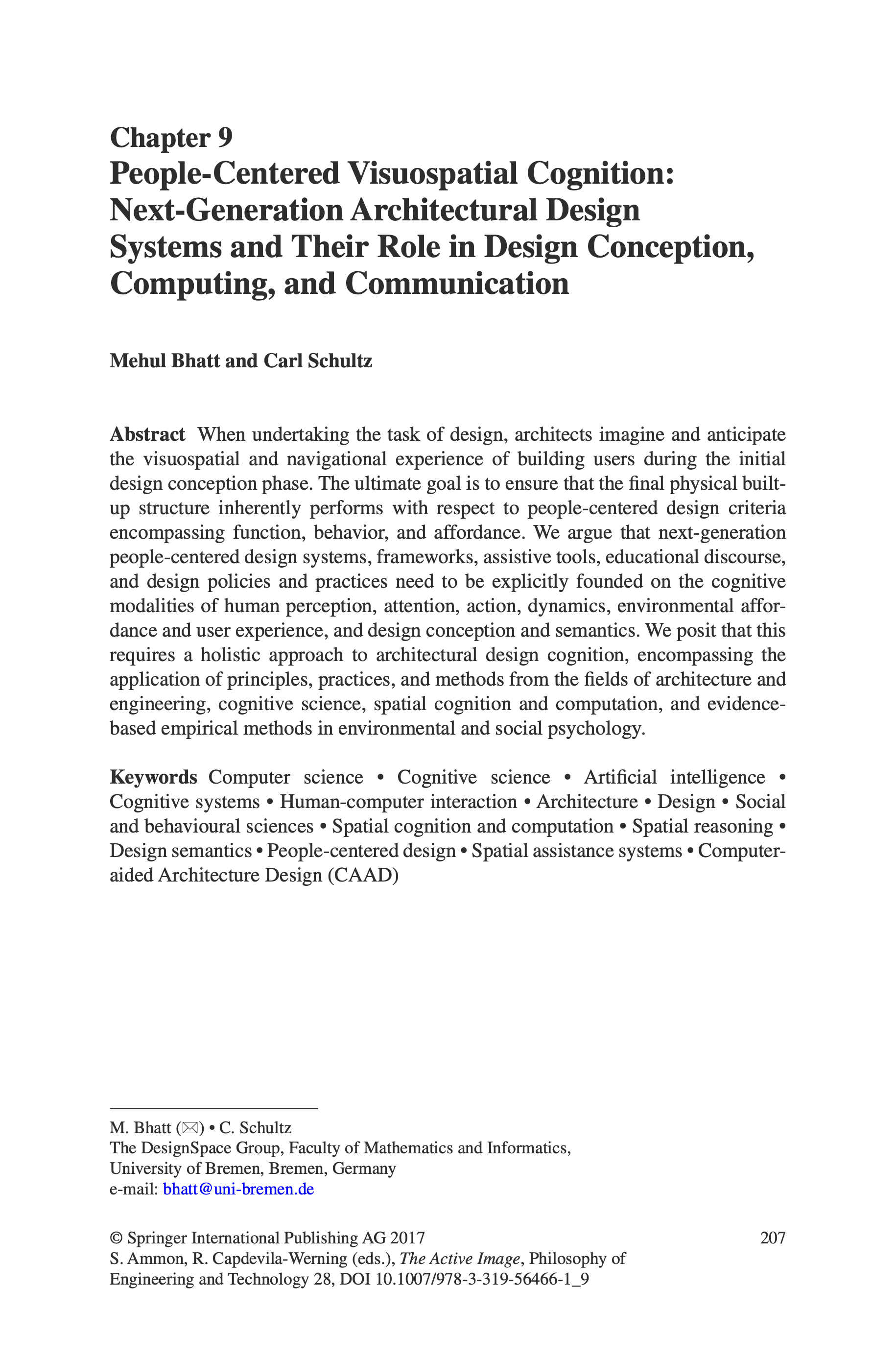
Conception. Computing. Communication.
We present a holistic approach to architectural design cognition, encompassing the application of principles, practices, and methods from the fields of architecture and engineering, artificial intelligence, cognitive science, spatial cognition and computation, and evidence-based empirical methods in environmental and social psychology.
Active Visual Perception. Change Blindness.
Attention. Visual Complexity.
"How do the limits of high-level visual processing affect human performance in naturalistic, dynamic settings of (multimodal) interaction where observers can draw on experience to strategically adapt attention to familiar forms of complexity?
Our findings uncover implications for driving education and development of driving skill-testing methods, as well as for human-factors guided development of AI-based driving assistance systems.
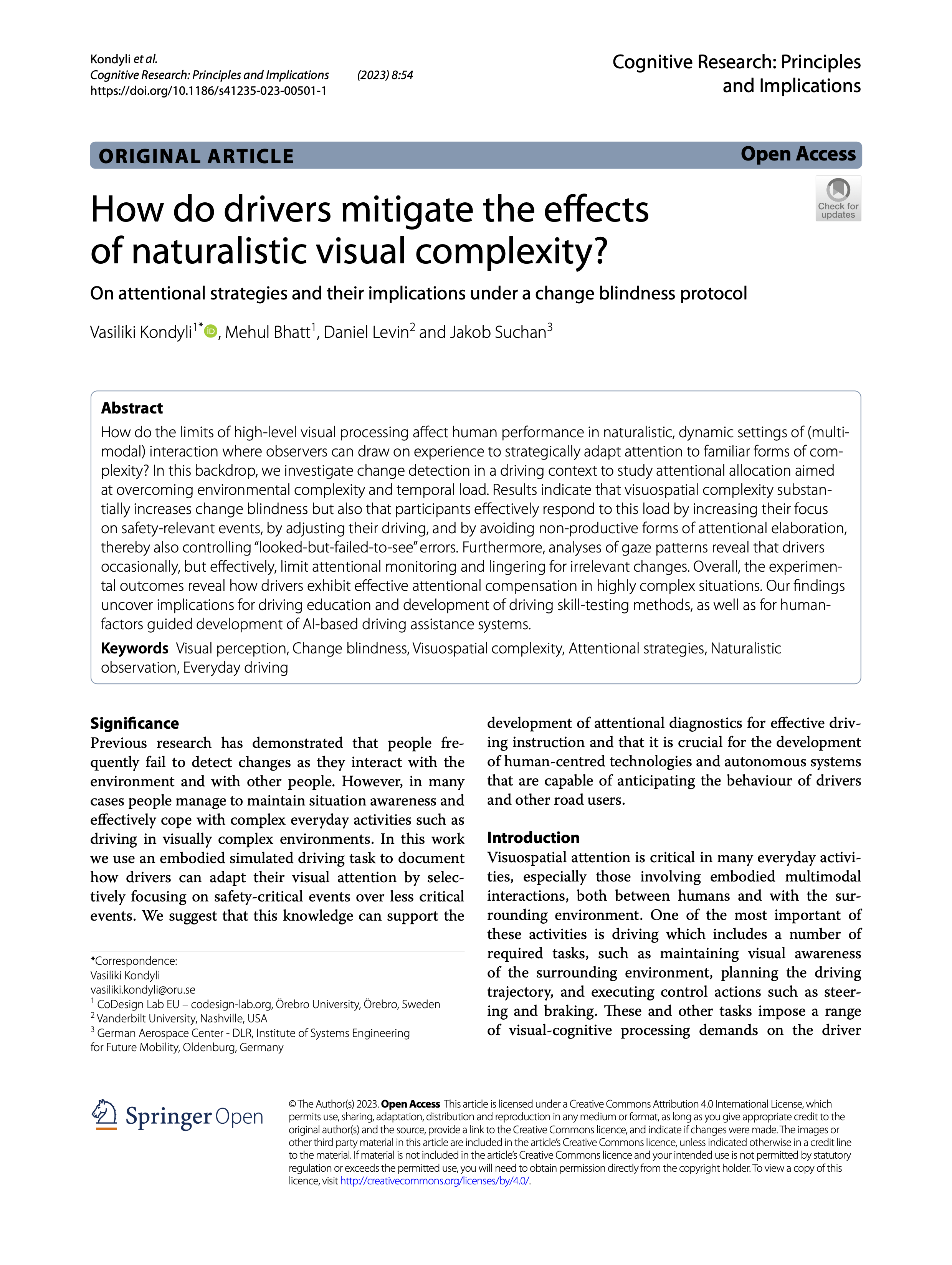
Active Visual Perception. Rotational Locomotion.
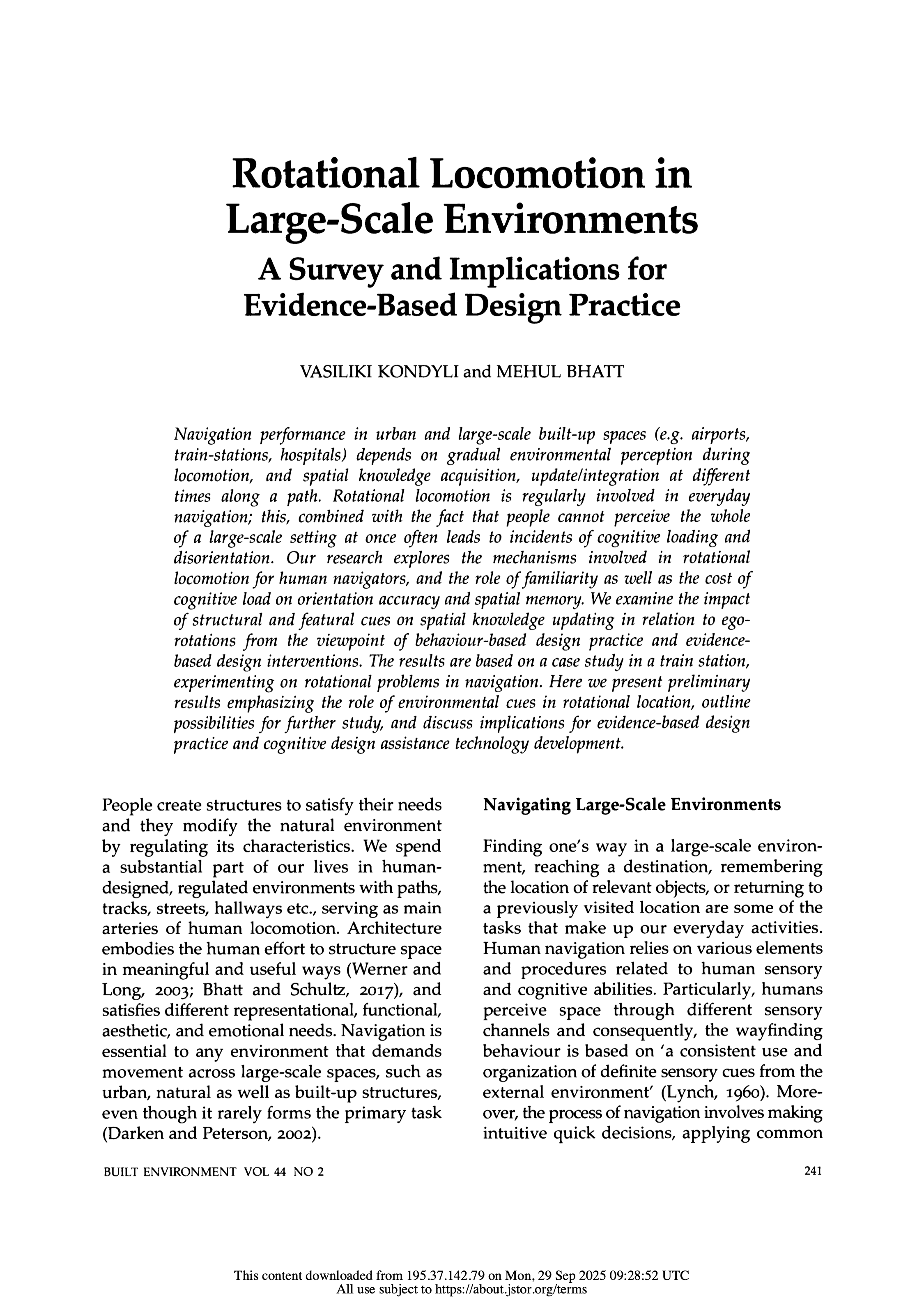
Sensorimotor Update. Embodied Navigation.
"Rotational locomotion is regularly involved in everydaynavigation ; this , combined with the fact that people cannot perceive the wholeof a large-scale setting at once often leads to incidents of cognitive loading anddisorientation. Our research explores the mechanisms involved in rotationallocomotion for human navigators , and the role of familiarity as well as the cost ofcognitive load on orientation accuracy and spatial memory.
We also discuss implications for evidence-based designpractice and cognitive design assistance technology development.
Scientific Outreach / Flagship Initiatives
CoDesign Lab EU / Institute 2024, and 2022
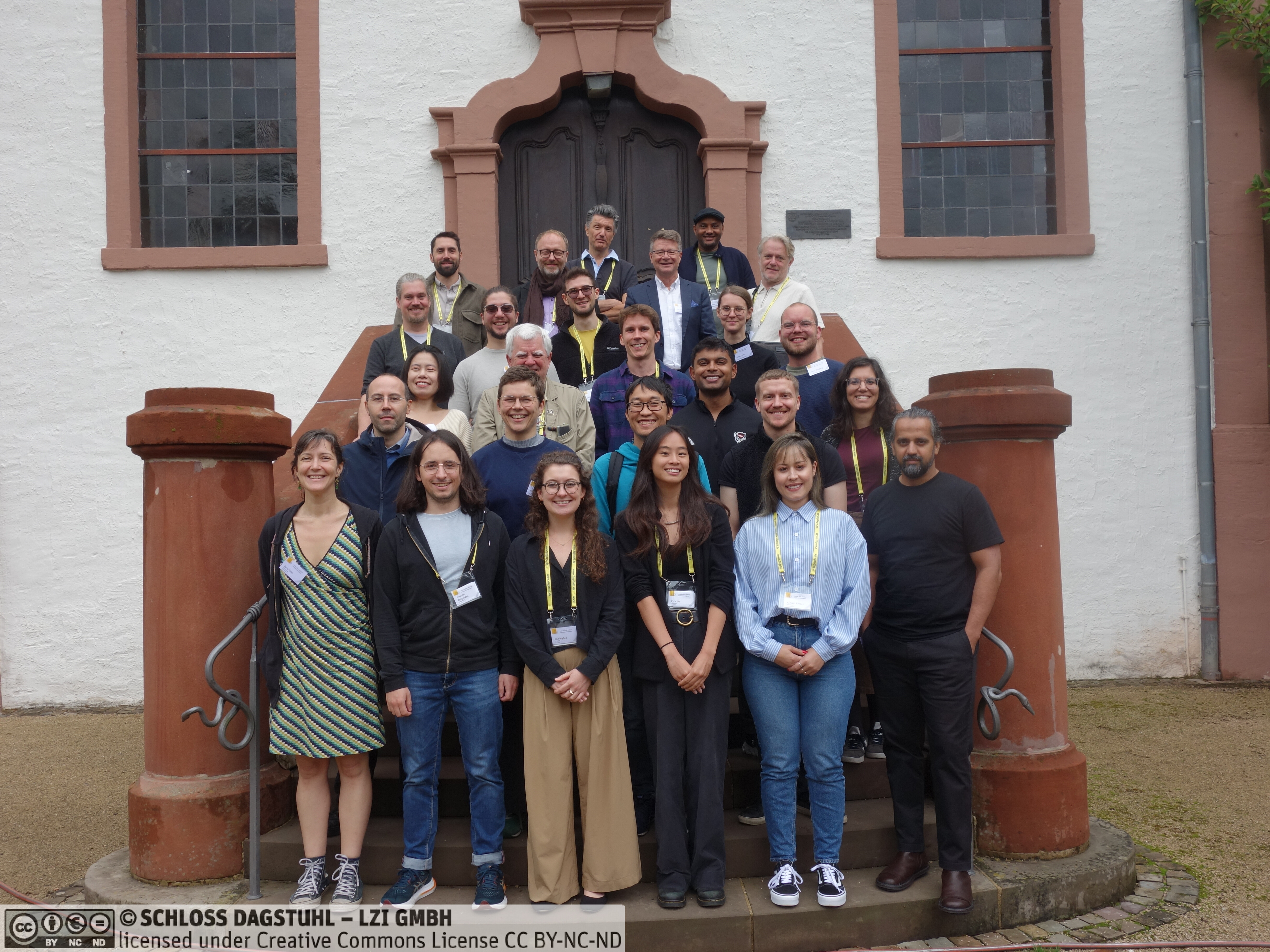
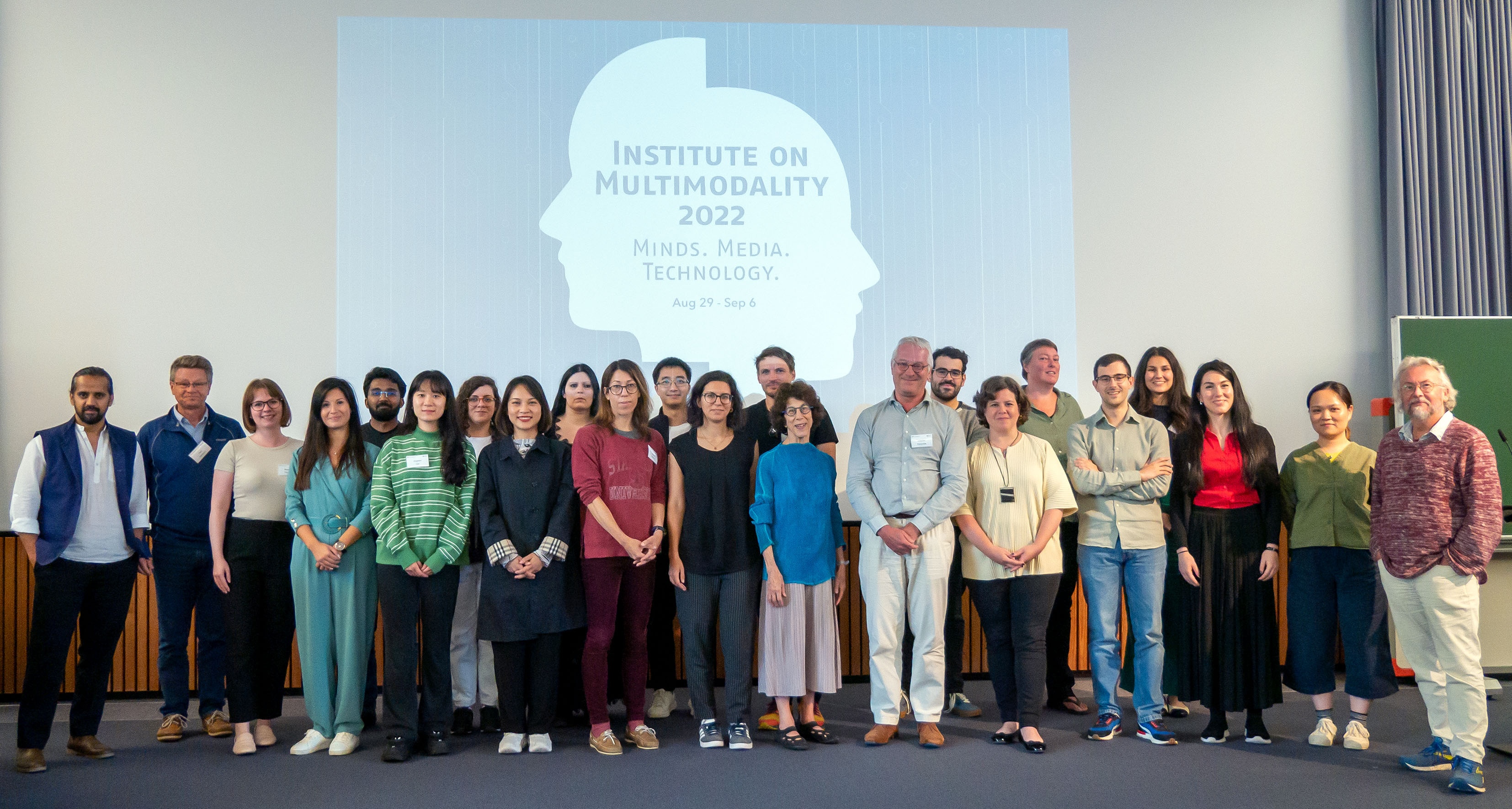
Schloss Dagstuhl. -and- Zif Bielefeld.
> School and Doctoral Colloquium
"Institute 2024 on Artificial and Human Intelligence brought together research methodologies and perspectives from Artificial Intelligence, Cognitive Science, Neuroscience, Psychology & Human Development, Human-Computer Interaction, and Design Science.
The institute's overarching focus was on Next-Generation Human-Centred AI and Cognitive Technologies; its technical programme addresses the formal & cognitive foundations for human-centred computing (for AI), and the human-centred design, development, and usability of cognitive technologies aimed at human-in-the-loop assistance & empowerment in decision-making, planning, creative-technical problem-solving, and automation."
CoDesign Lab EU / Training School 2024, 2022:
Representation Mediated Multimodality
Malta. Etelsen.
> School and Doctoral Colloquium.
"The training school on ``Representation Mediated Multimodality'' provides a consolidated perspective on the theoretical, methodological, and applied understanding of representation mediated multimodal sensemaking at the interface of language, knowledge representation and reasoning, and visuo-auditory computing. Intended purposes -addressed in the school- encompass diverse operative needs such as explainable multimodal commonsense understanding, multimodal generation/synthesis for communication, multimodal summarisation, multimodal interpretation guided decision-support, adaptation & autonomy, and analytical visualisation."
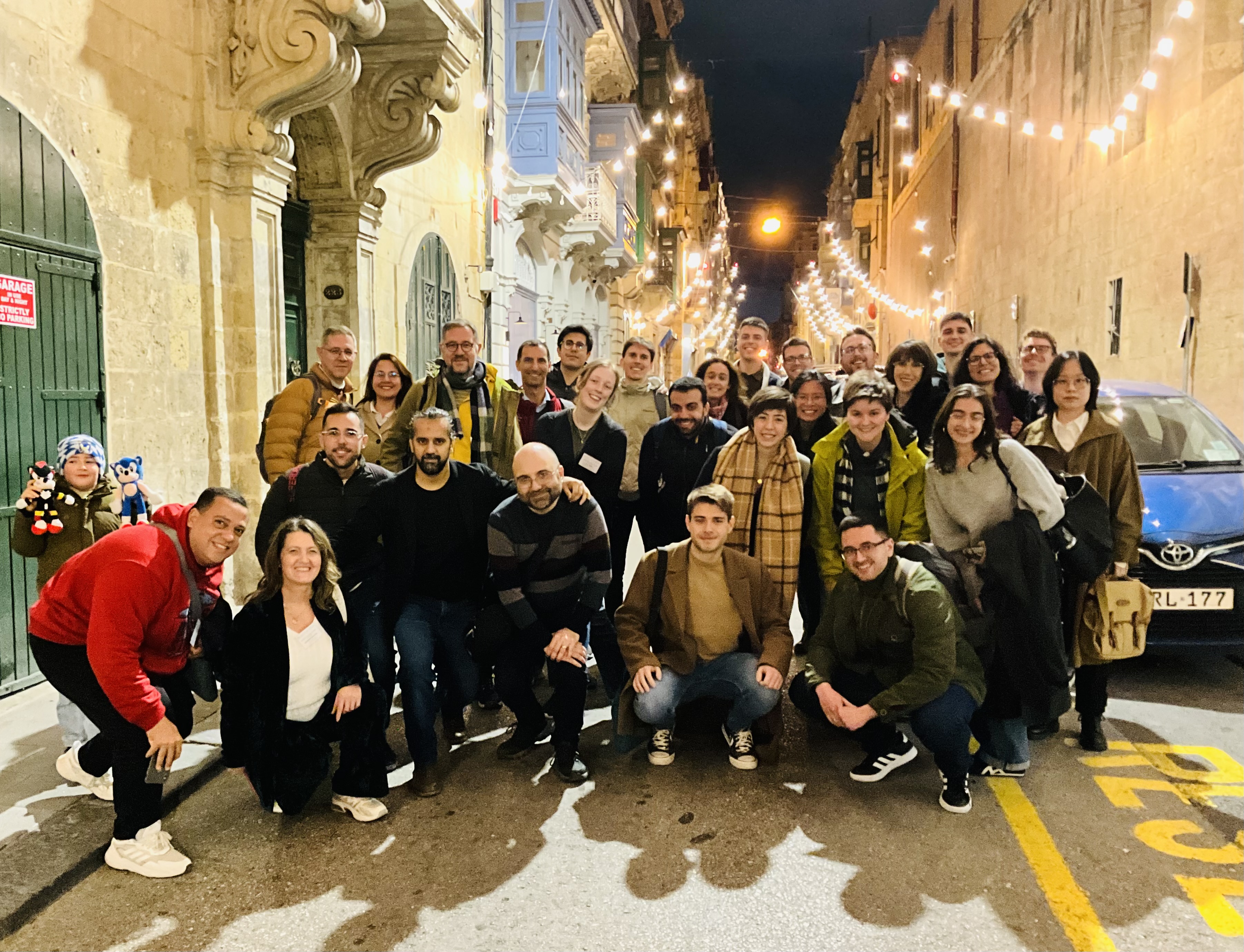
The Bremen Summer of Cognitive and Design, 2017
Seminars. Lectures. Workshops. Tutorials. Symposium. Experiments. Public Exhibition.
"CoDesign 2017, the Bremen Summer of Cognition and Design, was hosted as a series of mutually complementary events in the areas of artificial intelligence, spatial cognition, design computing and cognition, creativity, multimodality, communication and media, and human-behaviour studies. In a great many ways, the event set the stage for the scientific agenda of the CoDesign Lab EU."
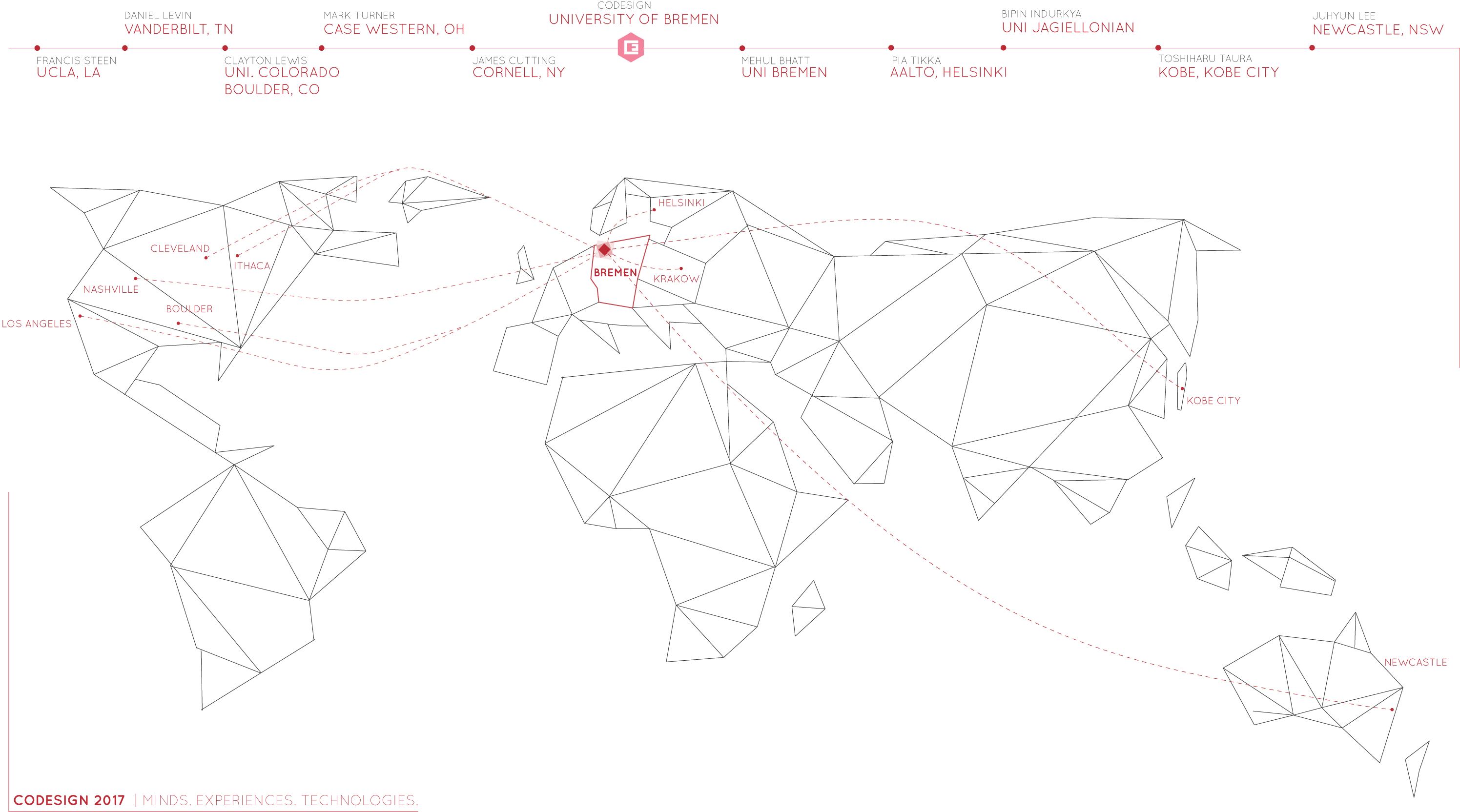
CoDesign Lab EU / Human-Centred Computing 2016
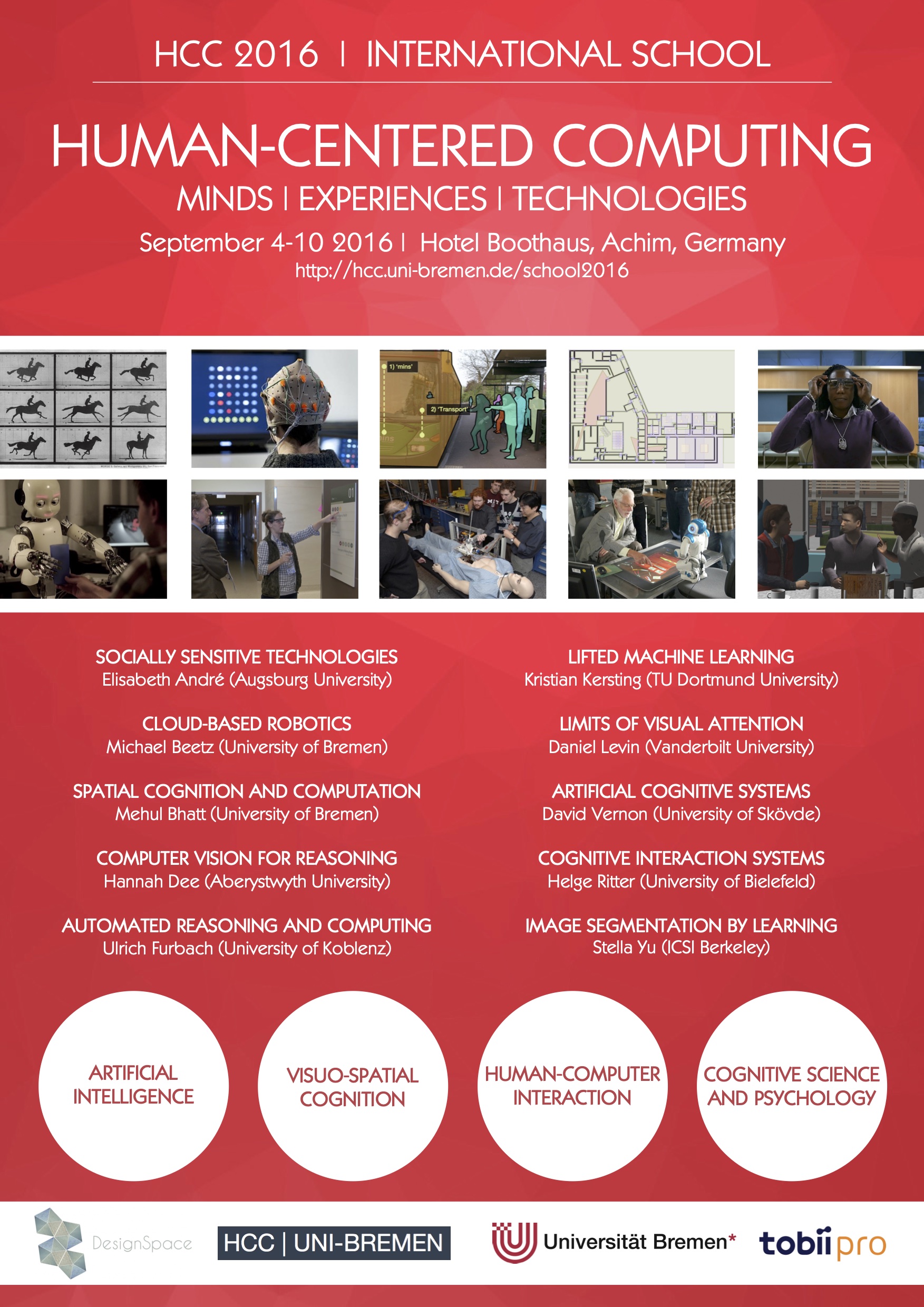
Schloss Etelsen, Germany.
> School and Doctoral Colloquium
"HCC 2016 addressed applications of basic research toward the development of human-centred cognitive assistive technologies and novel computer-human interaction paradigms in areas such as: architecture design cognition, evidence-based design & the built environment, cognitive robotics, commonsense reasoning for high-level control, cognitive film studies, moving image studies, media design, computer-assisted learning, AI and the arts: design, creativity, visual arts.
Significant emphasis is also devoted to empirical methods in visuo-auditory perception (eye-tracking, FMRI, EEG) aimed at studying the (embodied) reception and interpretation of dynamic visuo-spatial imagery in humans, and its implications in designing assistive technologies concerned with analysis and synthesis of user experience in the application areas of interest."
GET IN TOUCH
Direct contact:
SUBSCRIBE
Receive selective updates on CoDesign Initiatives (open calls, etc).